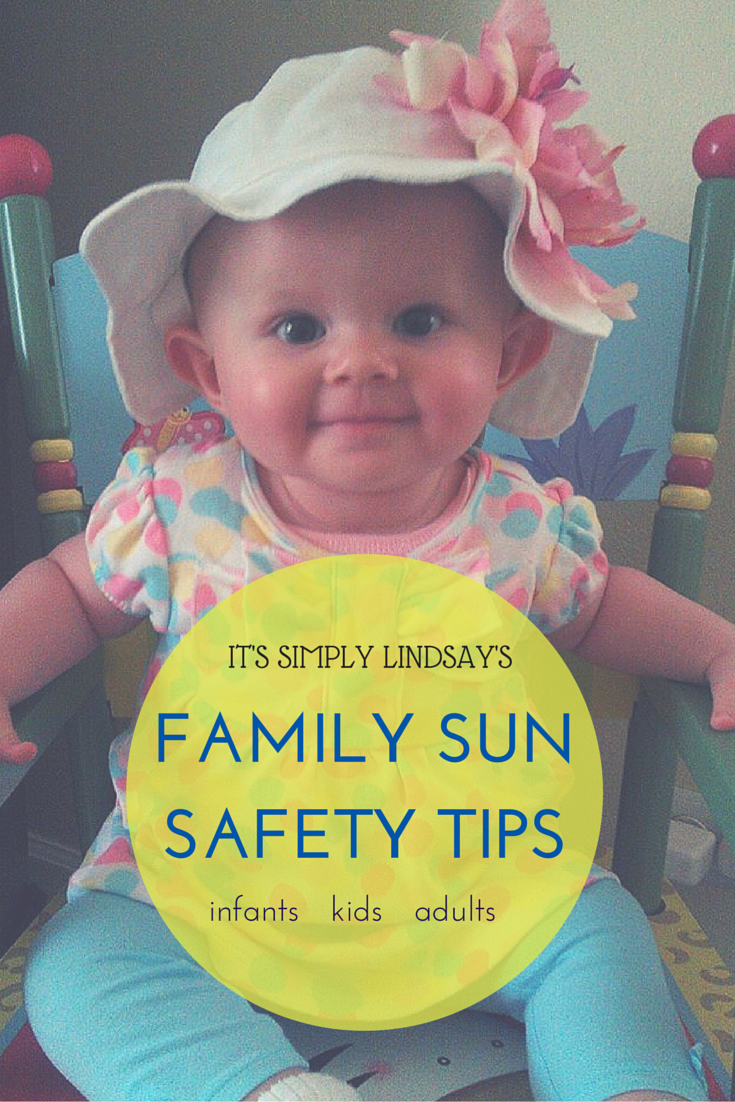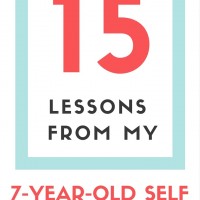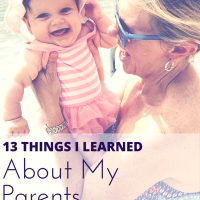
*This post contains affiliate links. I only recommend products or services I use personally and believe will add value to my readers.*
As a child, my mom always slathered me with Coppertone SPF 30, and as I grew up through my high school and college years, my SPF went down. Now that I’m supposedly an adult (and especially as a mom), I’m very conscious about my skin health. Gone are the days of SPF 5 Australian Gold Tanning Oil and in are the days of daily sunscreen on my face and checking labels.
Though I won’t deny I’ll miss the beautiful bronzed look I could easily achieve and the coconut scented banana infused concoction that left a sparkle behind after greasing my body, I have larger concerns to protect myself and my family.
Consult these important guidelines from the American Skin Cancer Society before heading to the park, pool, vacation, or even out on a walk or picnic.
Family Sun Safety Guidelines
Infants (0-6 months):
Since infants cannot wear sunscreen due to their sensitive skin, keep them out of the sun. That doesn’t mean you’re stuck indoors all summer though! Instead, follow these guidelines for safe outdoor fun with your infant:
- Use removable mesh window shields to keep direct sunlight from coming in through the windows of your car or invest in UV window film, which can screen almost 100 percent of ultraviolet radiation without reducing visibility.
- Take walks early in the morning before 10 AM or after 4 PM and use a stroller with a sun-protective cover.
- Dress baby in lightweight clothing that covers the arms and legs.
- Choose a wide-brimmed hat or bonnet that protects the baby’s face, neck, and ears. A baby who wears a hat during the first few months will get used to having it on.
Babies (6-12 months):
At 6 months, you can now safely use sunscreen on babies.
- Apply broad-spectrum, SPF 15+ sunscreen to areas left uncovered, such as baby’s hands. Many companies have tear-free formulas that won’t sting baby’s eyes.
- If you are using a spray sunscreen, it should not be applied directly to the face; sprays should be misted into the hands and then spread on the face.
- Most importantly, sunscreen must be applied 30 minutes before going outside and reapplied every two hours or after swimming or excessive sweating.
Toddlers/Pre-School Age
Protecting toddlers from the sun requires a little more thought and effort. It is important to educate your child and caregivers.
- Look for broad-spectrum sunscreens with an SPF 15 or higher. Water-resistant, spray-on sunscreens are a good choice for toddlers who won’t sit still. Spray sunscreens should not be applied directly to the face; sprays should be misted into the hands, then spread on the face.
- Make sure your child seeks the shade between 10 AM and 4 PM. Check the outdoor area where your child plays to make sure there is adequate shade.
- Make sure toddlers are covered. Long-sleeved, unbleached cotton clothing is cool and comfortable, while also highly protective. Clothing with an Ultraviolet Protection Factor (UPF) listing on the label offers extra security. The Skin Cancer Foundation recommends clothing with a UPF of 30 or higher.
- Don’t forget hats and sunglasses. Choose a wide-brimmed hat that protects face, neck, and ears.
Children, Teens, & Adults:
Follow the general guidelines below for choosing and using sunscreen properly.
Choosing Sunscreen
- Only pick sunscreen that says “broad-spectrum” on the label, meaning it’s designed to protect against UVB and UVA rays.
- Use a broad-spectrum sunscreen with an SPF of at least 15. SPF 15-30 is good for most people, and research shows anything after 50 does not offer extra protection.
- For sensitive areas of the body, such as the nose, cheeks, tops of the ears, and shoulders, choose a sunscreen with zinc oxide or titanium dioxide. These products traditionally stay visible on the skin even after you rub them in though they also come in clear forms, still providing ultimate protection.
Properly Applying Sunscreen
- Use enough sunscreen to cover all exposed areas, especially the face, nose, ears, feet, hands, and even backs of the knees. Rub it in well.
- Put sunscreen on 15 to 30 minutes before going outdoors so it can have time to absorb and work properly.
- Use sunscreen every time you or your child spends time outside, even if it’s not super sunny! You can sometimes get the worst sunburns on cloudy days because people don’t realize that 80% of the sun’s UV rays can still get through the clouds.
- Apply and reapply sunscreen generously every 2 hours as well as after swimming, sweating, or drying off with a towel.
Though people who are exposed to larger amounts of UV rays are at a greater risk of cancer, don’t let that keep you inside. It’s important to get outside, get moving, and have fun while protecting your skin with these guidelines. While I may not ever have that tanned skin I used to love, I look forward to enjoying the sun in healthier ways. I see a new wide-brimmed hat, UV protection sunglasses, and cute kimono-style cover ups in my future.
Recommended products: Burt’s Bees Baby Bee SPF 30 Sunscreen Stick, Neutrogena Baby Stick Spf 60
, Banana Boat Sunscreen Kids Family Size
, Banana Boat Sunscreen Ultra Mist Kids SPF 50
, Banana Boat Sunscreen Sport Family Size
, Neutrogena Ultimate Sport Sunscreen
, Neutrogena Ultra Sheer Dry Touch Sunscreen














